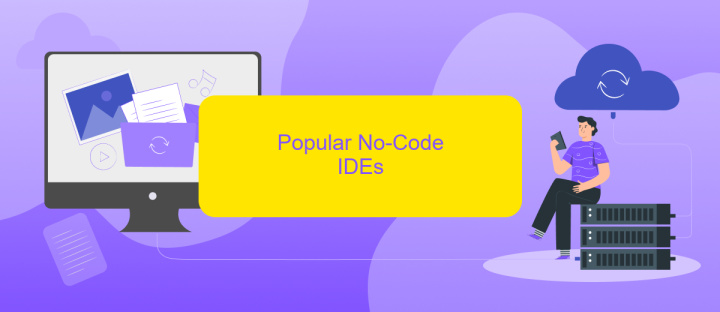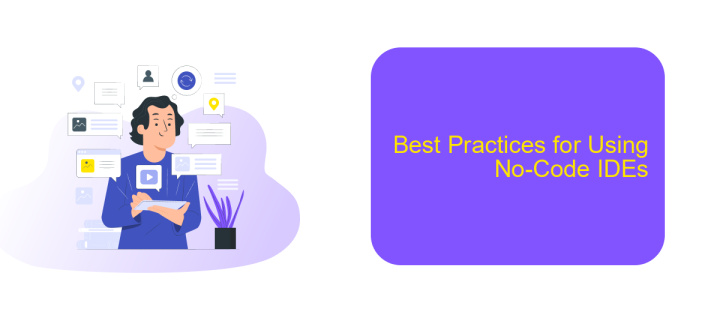No-Code IDE
In recent years, the rise of no-code IDEs (Integrated Development Environments) has revolutionized software development, empowering individuals without formal programming skills to create complex applications. By leveraging intuitive drag-and-drop interfaces and pre-built components, these platforms democratize technology, allowing businesses and hobbyists alike to innovate faster and more efficiently. This article explores the benefits, features, and future potential of no-code IDEs.
Introduction to No-Code IDEs
No-Code IDEs are revolutionizing the way we approach software development by enabling individuals without traditional coding skills to create functional applications. These platforms provide a user-friendly interface with drag-and-drop features, allowing users to build, test, and deploy applications quickly and efficiently.
- Intuitive drag-and-drop interface
- Pre-built templates and components
- Seamless integration with third-party services like ApiX-Drive
- Real-time collaboration and version control
One of the significant advantages of No-Code IDEs is their ability to integrate with various services effortlessly. For instance, ApiX-Drive allows users to set up integrations between different applications without any coding. This makes it easier to automate workflows and synchronize data across platforms, enhancing productivity and reducing the time spent on manual tasks.
Benefits and Features of No-Code IDEs

No-Code IDEs offer a range of benefits that enable users to create applications without the need for extensive programming knowledge. One of the primary advantages is the accelerated development process, allowing for rapid prototyping and deployment. This speed is achieved through intuitive drag-and-drop interfaces, pre-built templates, and reusable components, which simplify the creation of complex applications. Additionally, No-Code IDEs lower the barrier to entry, making it accessible for non-developers such as business analysts, marketers, and project managers to build and iterate on software solutions.
Another significant feature of No-Code IDEs is their ability to integrate seamlessly with various third-party services and APIs. Tools like ApiX-Drive facilitate these integrations, enabling users to connect their applications with external systems effortlessly. This not only enhances the functionality of the applications but also allows for automation of workflows, improving overall efficiency. Furthermore, No-Code IDEs often come with built-in security features and compliance checks, ensuring that applications are secure and adhere to industry standards. These platforms empower organizations to innovate quickly while maintaining high-quality standards.
Popular No-Code IDEs

No-Code IDEs have revolutionized the way individuals and businesses approach software development, making it accessible to those without a traditional coding background. These platforms offer intuitive interfaces and drag-and-drop functionality, streamlining the development process.
- Bubble: Known for its powerful features, Bubble allows users to create complex web applications without writing code. It offers a wide range of integrations and a strong community for support.
- Adalo: Adalo focuses on mobile app development, providing a user-friendly interface to build apps quickly. It supports various integrations to enhance app functionality.
- Webflow: Webflow is ideal for web designers looking to create responsive websites. It combines visual design tools with the power of CSS and HTML, offering flexibility and control.
- ApiX-Drive: This service is essential for automating integrations between various applications and services, making it easier to connect different tools within your No-Code projects.
These No-Code IDEs empower users to bring their ideas to life without the need for extensive programming knowledge. Whether you're building a web application, a mobile app, or automating workflows, these platforms offer the tools and integrations necessary to streamline development and deployment.
Best Practices for Using No-Code IDEs

Using No-Code IDEs can significantly streamline development processes, but it's essential to follow best practices to maximize their benefits. Start by thoroughly understanding the capabilities and limitations of your chosen IDE. This ensures you can leverage its full potential without encountering unexpected roadblocks.
Next, focus on designing a clear and organized project structure. This helps maintain readability and manageability as your project grows. Additionally, always keep a backup of your work to prevent data loss and facilitate easier troubleshooting.
- Utilize built-in templates and components to accelerate development.
- Regularly test your application to catch and resolve issues early.
- Document your workflows and processes for future reference.
- Integrate third-party services like ApiX-Drive to automate and streamline data flows.
Lastly, stay updated with the latest features and updates of your No-Code IDE. Regularly engaging with the community and official documentation can provide valuable insights and tips. By following these best practices, you can ensure a smoother, more efficient development experience.
Future Trends and Advancements in No-Code IDEs
The future of No-Code IDEs is poised for significant advancements, driven by emerging technologies and increasing user demand. One key trend is the integration of artificial intelligence and machine learning, which will enable more intuitive design experiences and predictive analytics. These advancements will allow users to create more complex applications with minimal effort, enhancing the overall efficiency and effectiveness of No-Code platforms. Additionally, improved collaboration features will enable teams to work seamlessly together, regardless of their technical expertise.
Another important trend is the expansion of integration capabilities with third-party services. Platforms like ApiX-Drive are leading the way by offering seamless integration solutions, allowing users to connect various applications and automate workflows effortlessly. This not only reduces the need for manual intervention but also ensures data consistency across different systems. As No-Code IDEs continue to evolve, we can expect more robust security features, enhanced user interfaces, and greater scalability, making them indispensable tools for businesses of all sizes.
FAQ
What is a No-Code IDE?
Who can benefit from using a No-Code IDE?
Can I integrate third-party services with a No-Code IDE?
Is it possible to scale applications built with a No-Code IDE?
What are some common use cases for No-Code IDEs?
Time is the most valuable resource in today's business realities. By eliminating the routine from work processes, you will get more opportunities to implement the most daring plans and ideas. Choose – you can continue to waste time, money and nerves on inefficient solutions, or you can use ApiX-Drive, automating work processes and achieving results with minimal investment of money, effort and human resources.

